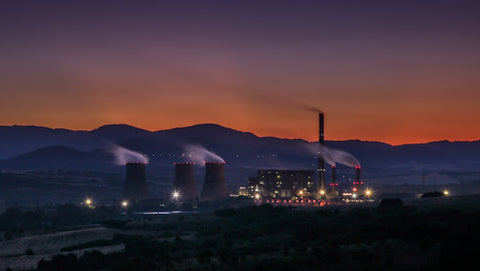Solar Power Blog

Discover the Future of Energy - 7 Types of Renewable Energy
The world relies heavily on energy for manufacturing, transportation, lighting and heating. Traditionally, most of this energy has been produced by burning coal, oil and natural gas. These sources will run out at some point as we continue to extract them from the earth. As a planet, we need to turn to renewable energy to ensure we all have sufficient power in the future. We must also use energy sources that don’t damage the environment and impair our health. Renewable energy is the answer.
What is Renewable Energy?
Energy sources that do not deplete when used and replenish themselves infinitely are renewable. This includes sunlight, waves, wind and geothermal heat. By contrast, natural gas, oil and coal (fossil fuels) are not being replenished as quickly as they are being used. They will become exhausted. Renewable energy sources are being used and developed every day - currently, 7 different types are leading the way. So, what are they? Let’s begin with solar energy.
Solar Energy

Solar energy uses the natural light and heat of the sun to produce electricity, heating or hot water. Solar panels produce electricity when sunlight hits the combination of photovoltaic cells and silicon. A direct current of electricity is generated, which goes through an inverter. The electricity is then used as a power source.
As long as the sun shines, there will be free solar energy. It’s a quiet energy source that doesn’t pollute the air. Solar energy works efficiently in most parts of the globe – it doesn’t have to be sunny all the time, it just has to be light enough to see. Cloudy days and rainy days produce enough light for solar panels to work.
Solar energy is being used in practical ways in many homes across the country every day, from inexpensive garden lights to automatic pool cleaners. To embrace residential solar energy completely, it can be used to heat an entire home as well.
Wind Energy
The power of the wind has been used for centuries by ship sails, windmills and pumps. Today, huge turbines use the wind to generate electricity. As the blades of the turbine spin in the wind, the attached shaft turns a generator and produces electrical energy. The wind is a clean energy source that doesn't pollute.
Ocean and Tidal Energy
The seas provide two different types of energy – one harnesses the temperature differences in the water, and the other uses the ebb and flow of tides.
In warmer climates, the surface of the ocean is much warmer than the depths, and this difference is used to produce electricity.
The rise and fall of the seas are powerful, and this continuous movement is used to produce electricity in a variety of different ways. For example, turbines that are moved by the flow of water can be found in some countries. Although it is a green energy source, tidal energy isn’t used as commonly as solar.
Geothermal Energy

The Earth’s core is extremely hot, hot enough to melt rock, and this heat can be used as an energy source. Many countries have tapped into the heat below by drilling down and creating steam. Steam is used to power turbines or other methods of producing electricity.
For domestic use, the soil just a few feet below the surface can be utilised for low-temperature geotherm energy. Ground-source heat pumps can be used to hear well-insulated homes year-round.
Bioenergy
Bioenergy comes from using biomass, and biomass is a plant-based matter that is used for fuel. Firewood, for example, is biomass, but so are agricultural waste and sewage. Using trees for fuel isn’t easily sustainable but using by-products could be a better source of energy.
Burning biomass produces pollution, and so this isn’t the cleanest renewable source available to us.
Hydrogen Energy
Hydrogen is available in abundance. It’s an invisible gas that can be used as a clean energy source on demand. Hydrogen must be processed before it can be used – there are several different ways of doing this such as separating the compounds of water. Once produced, hydrogen is consumed in fuels cells to form electricity. It’s a clean source of energy used currently in trucks, buses and some ships.
Hydropower Energy

What is Hydroelectricity? It’s a renewable energy source that uses moving water to generate electricity. To harness the power of the water, dams are constructed to divert the way a river flows. As the water travels naturally downstream, turbines use the movement to turn and produce electricity. The Hoover Dam on the Nevada/Arizona border, for example, creates approximately 4 billion KWh of electricity every year.
Shifting to Renewable Energy
The benefits of using renewable energy are many; fewer emissions, less maintenance, an endless supply and less expensive in the longer run. Some energy sources, such as hydroelectricity, require a connection to the grid, but solar panels can be installed in most properties with just a few factors to consider.
Author Bio:
Diarmuid Hennessy is the Operations Manager of HomeCheck. Since 2016, they have been providing property survey services to homeowners throughout Ireland.

